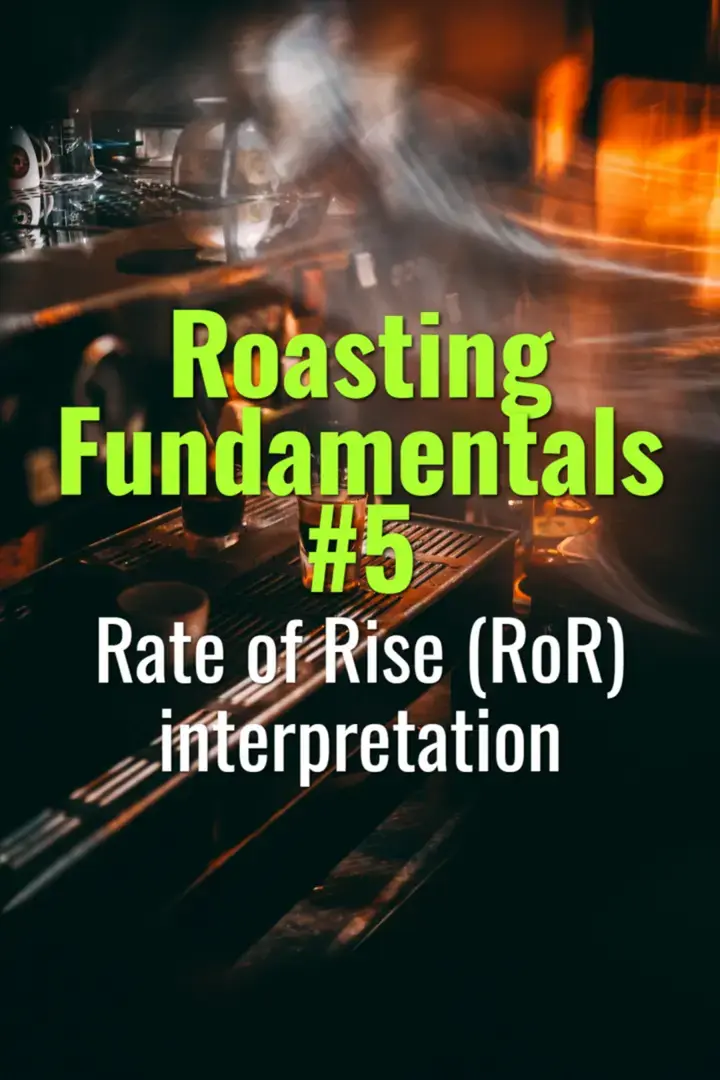Rate of Rise (RoR) interpretation
This topic covers how to interpret the Rate of Rise (RoR) during coffee roasting, why it’s crucial for controlling roast development, and how to make real-time adjustments based on RoR trends.
- Coffee Basics Nerds
- 2 min read
Article 5 of 12 in Roasting Fundamentals/

Key Concepts
- Rate of Rise (RoR): The rate at which bean temperature increases per minute, usually expressed in °C/min or °F/min.
- Dynamic indicator: Helps predict how the roast will progress before first crack and beyond.
- RoR curve: Plotted against time or bean temperature to visualize trends.
Typical RoR Stages
- Drying phase: RoR starts high, may peak early; moisture removal absorbs heat, causing gradual decrease.
- Maillard phase: RoR naturally declines; careful monitoring prevents overshoot.
- Development (post-first crack): RoR drops sharply; critical for controlling final roast character.
Interpreting RoR
- High RoR: Rapid BT increase; risk of tipping or uneven development.
- Flat or declining RoR: Normal progression; signals need to adjust heat to maintain even development.
- Sudden spikes/dips: Could indicate airflow changes, drum issues, or sensor errors.
Practical Application
- Predictive roasting: Use RoR to anticipate first crack and adjust heat input.
- Consistency: Replicate desired profiles across batches by matching RoR curves.
- Troubleshooting: Identify deviations early to prevent roast defects.
Tips for Roasters
- Always monitor RoR alongside BT and ET.
- Use software or loggers to visualize RoR in real time.
- Adjust ET gradually; sudden changes can destabilize RoR and affect flavor.
Summary
RoR interpretation provides a proactive method for controlling roast progression, ensuring flavor consistency, and preventing under- or overdevelopment. Understanding RoR curves is essential for precision roasting and high-quality cup outcomes.